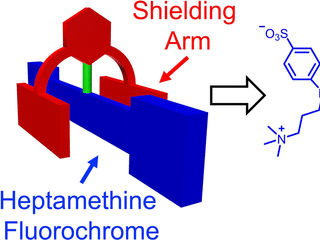New dyes detect disease through heartbeat signals
Vibrant tones of yellow, orange, and red move in waves across the screen. Although the display looks like psychedelic art, it's actually providing highly technical medical information -- the electrical activity of a beating heart stained with voltage-sensitive dyes to test for injury or disease.

UConn Health researchers developed and patented voltage-sensitive dyes that cause cells, tissues, or whole organs to light up as a result of electrical impulses and allow this activity to be measured. The product has potential in the process of drug discovery.
Peter Morenus/UConn Photo
These voltage-sensitive dyes were developed and patented by UConn Health researchers, who have now embarked on commercializing their product for industry as well as academic use.
Electrical signals or voltages are fundamental in the natural function of brain and heart tissue, and disrupted electrical signaling can be a cause or consequence of injury or disease. Directly measuring electrical activity of the membranes with electrodes isn't possible for drug screening or diagnostic imaging because of their tiny size. In order to make the electrical potential visible, researchers use fluorescent voltage sensors, also known as voltage-sensitive dyes or VSDs, that make cells, tissues, or whole organs light up and allows them to be measured with microscopes.
Not all dyes respond to voltage changes in the same way, and there is a common trade-off between their sensitivity and speed. Slower dyes can be used for drug screening with high sensitivity, but they can't measure the characteristics of rapid action potentials in some tissues, like cardiac cells. Fast dyes can be used to image action potentials, but they require expensive, customized instrumentation, and are not sensitive enough for crystal clear results on individual cells.
Professor of cell biology and director of UConn's Center for Cell Analysis & Modeling, Leslie Loew and his team have developed new fast dyes that are also highly sensitive, eliminating the speed/sensitivity trade-off.
Loew and research associates Corey Acker and Ping Yan have devoted much of their careers to developing and characterizing fluorescent probes of membrane potential like voltage-sensitive dyes. The team has even been providing their patented fast dyes to fellow researchers for the past 30 years, but they only recently became interested in commercializing their work.
Loew and Acker's first step into entrepreneurship began in the fall of 2016, when they were accepted into UConn's National Science Foundation (NSF) I-Corps site, Accelerate UConn, which is the only NSF I-Corps site in the state. They credit the program with giving them a solid foundation to evaluate their technology and business strategy.
"Dr. Loew's experience is a prime example of how the NSF I-Corp program can transform high-potential academic discoveries into viable products and services with the right training," says Radenka Maric, UConn's vice president for research. "Accelerate UConn helps our preeminent faculty move their ideas beyond the lab so they can join the ranks of other successful entrepreneurs and industry leaders, and have an impact in our communities and on the economy."
Acker says the program also helped them identify an exciting new market opportunity targeting pharmaceutical companies. These companies need dyes that are both fast and sensitive for high-throughput screening of potential therapeutic targets. In high-throughput drug screening, scientists create special cell lines, and then use advanced equipment to robotically apply different drugs to rotating dishes of cells. The cells are stained with a voltage-sensitive dye that displays any change in membrane potential or voltage after drug application with changes in fluorescence. Acker estimates that pharmaceutical companies and contract research organizations (CROs) spend over $10,000 on these dyes for each week-long study.
The dyes that Loew, Acker, and Yan develop will also allow drug companies to respond to new cardiac safety screening regulations from the Food and Drug Administration called CiPA (the Comprehensive in vitro Proarrythmia Assay).
CiPA regulations aim to establish better ways to detect side effects of new drugs that could cause a cardiac arrhythmia. In a key component of CiPA, screening is completed in cardiac cells with a realistic electrical heartbeat. The Loew team's fast-sensitive dyes could offer drug companies more effective options than are currently available. Since CiPA applies to any new therapies from weight-loss drugs to allergy medications, Loew and Acker anticipate high demand for their technology.
Acker conducted dozens of interviews with experts from industry who use VSDs for drug screening. They all expressed a need for dyes with improved sensitivity, faster speed, and fewer unwanted interactions or toxicity with the cells being tested.
Loew and his team were confident they could deliver. Their new dyes improve on the current sensors used for drug screening, which involve a two-component system and energy transfer between the components. The researchers produce dyes that use a novel VSD system where energy transfer is more efficient, resulting in faster, more sensitive, and less toxic dyes. Recently they have developed and tested two new dyes, and they have conceptualized a few additional possibilities. One of their current prototypes is extremely promising, Loew says.
The team has formed a startup, Potentiometric Probes, housed in UConn's Technology Incubation Program, to continue their commercialization efforts.

























































